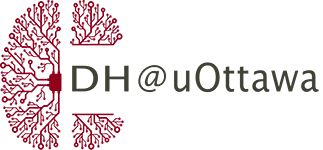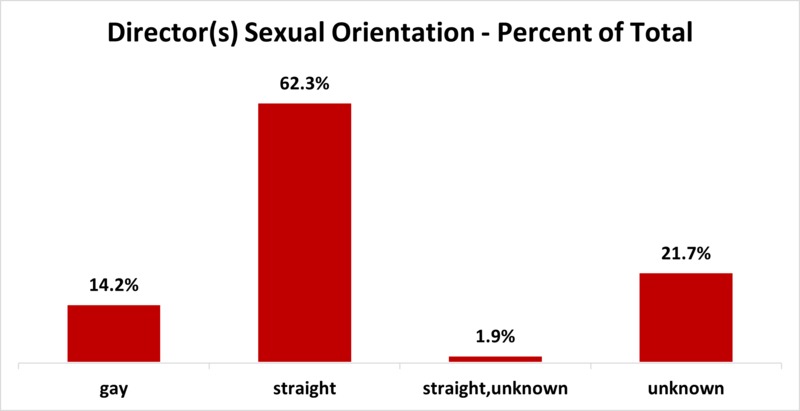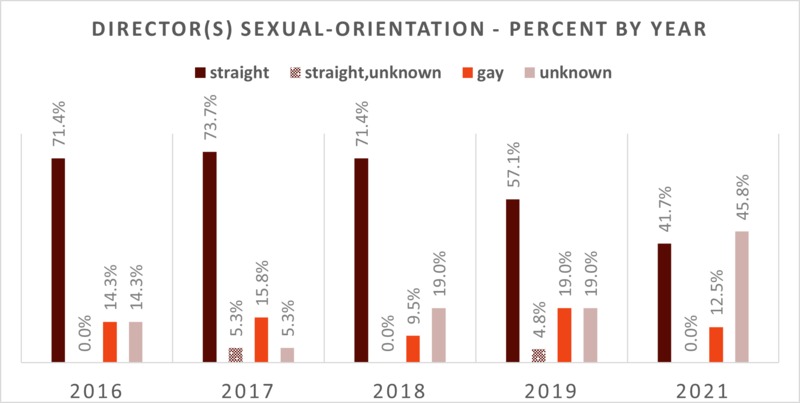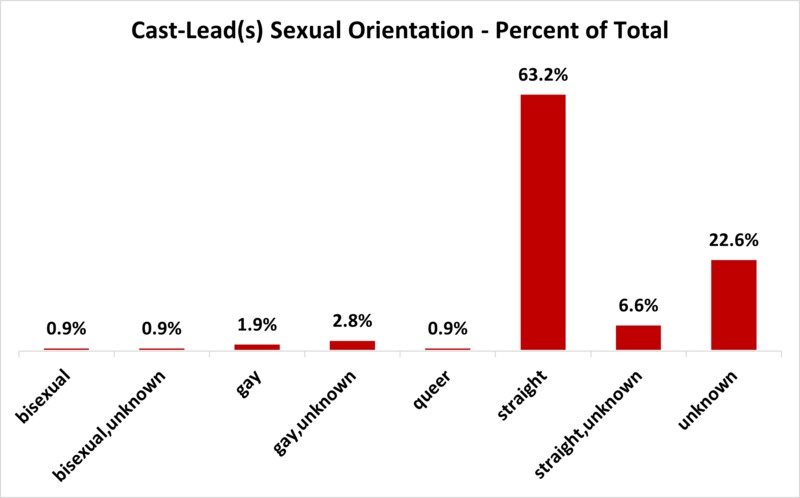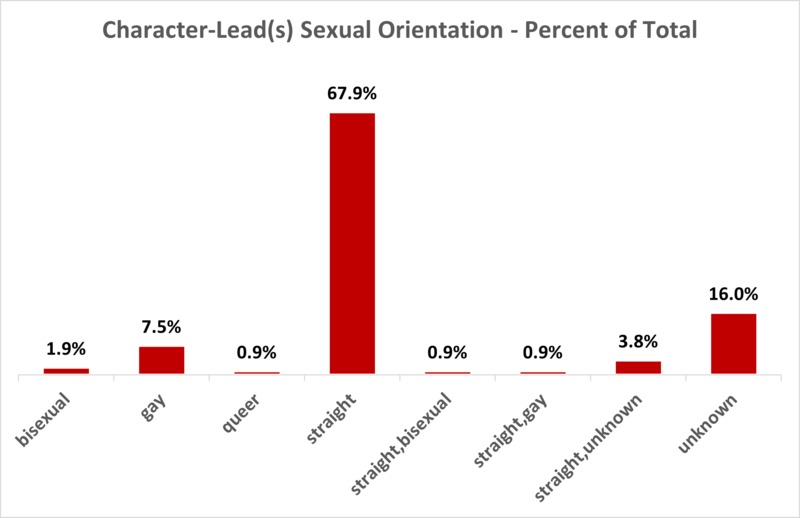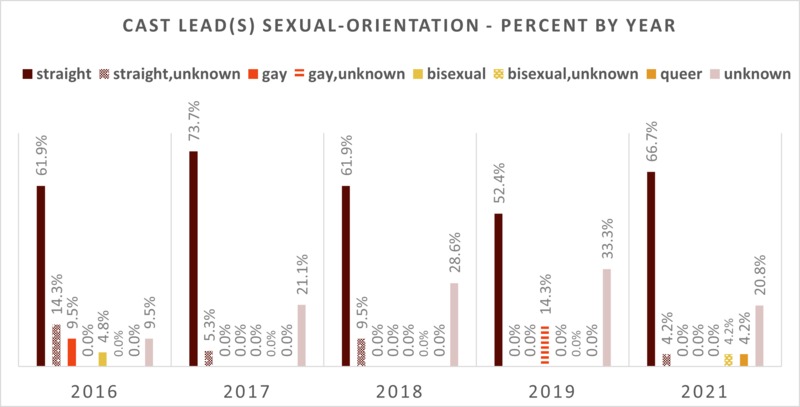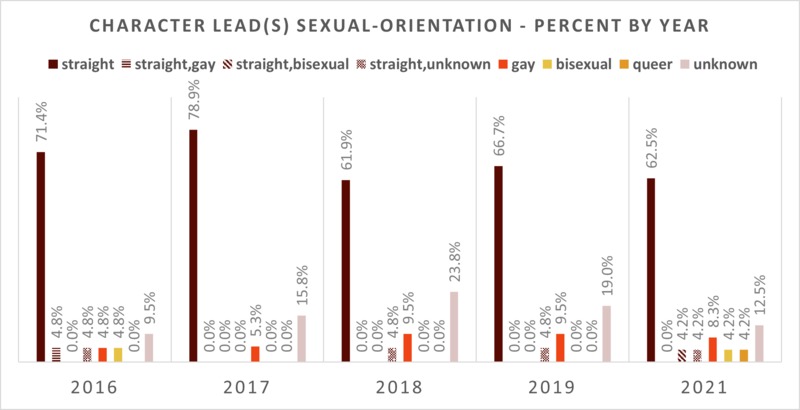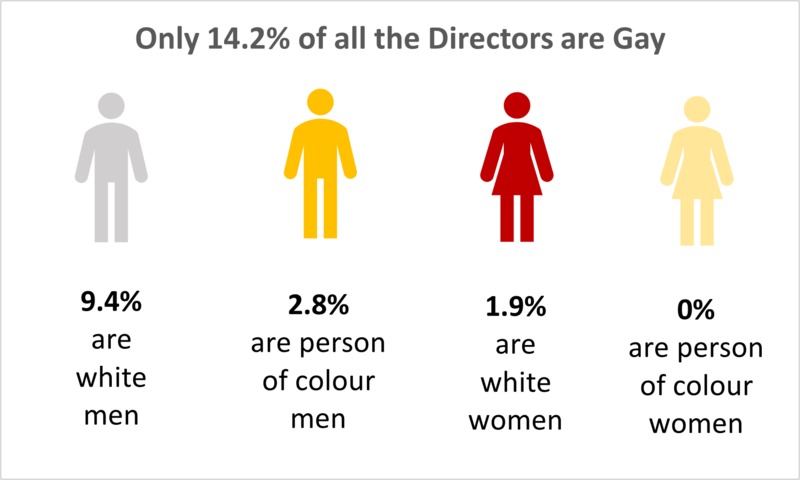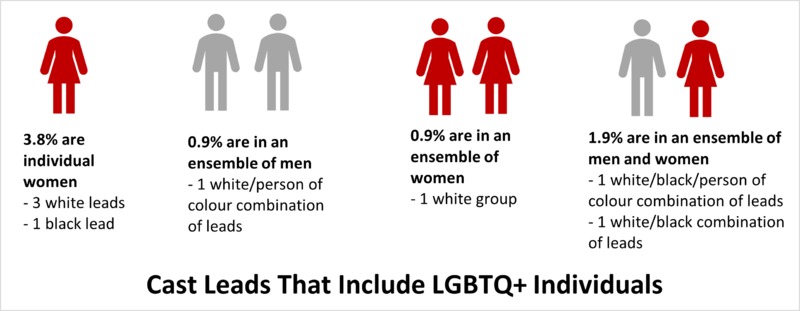- Sexual Orientation
Director(s)
The data on the overall sexual orientation of the directors shows that of all the directors, 62.3% are straight, 21.7% are unknown, 14.2% are gay, and 1.9% are a combination (straight, unknown).
Year over year, the data shows that in most years the majority of directors are straight, up to 73.7% in 2017. However, in 2021 the percent of directors with unknown sexual orientation (45.8%) did surpass the percent of straight directors (41.7%).
Cast Lead(s) and Character Lead(s)
In the overall graphics for sexual orientation of the cast leads and character leads, there is variablity in the type (bisexual, gay, queer, straight, unknown) or combinations of sexual orientation represented. However, the percent that are straight is still the majority for both cast leads (63.2%) and character leads (67.9%). Meanwhile the percent of gay cast leads is very low (1.9%) but is increased for gay character leads (7.5%).
Looking at the sexual orientation of cast leads and character leads year over year, the main takeaway is that for both, in any given year, most are straight. The average amount of straight leads is 63% of the total each year for cast leads and 68% for character leads.
There are also examples of real life not necessarily matching what is on screen here. For instance, in some years such as 2019, the percent of cast leads with unknown sexual orientation (33.3%) is elevated compared to that of the character leads (19%) in the same year. Additionally, there are more gay character leads than gay cast leads in all years except for 2016, though then the proportion of gay cast leads (9.5%) does match the highest proportion of gay character leads, which occurred in both 2018 and 2019.
Spotlight on Minoritized Groups
I compared artists (directors, cast and character leads) who have a LGBTQ+ sexual orientation with both their gender and race to closely examine how these three different facets of identity appeared in the dataset.
For the directors, I found that the only LGBTQ+ category that any identified as was gay (at least partly because I included lesbian with gay in my controlled vocabulary). In this minoritized group, the majority are white men (9.4%); next are men of colour (2.8%); then white women (1.9%); and finally, women of colour (0.0%).
For the cast and character leads that include LGBTQ+ individuals, there are interesting similarities and differences. First 3.8% in both groups are individual women but the cast lead is comprised of 3 white leads and 1 black lead, while the character leads are 4 white women. The most striking difference between the cast leads and character leads is that the largest number of LGBTQ+ cast leads are individual women (3.8%) and for character leads this is individual men (4.7%).
